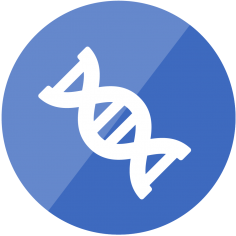
Genetics
Did you know that if one person’s DNA was unraveled and placed end to end, it would stretch to the sun and back at least 60 times? Or that humans and chimps share a surprising 98.8 percent of their DNA? How can we be so similar and yet so different? How does all that relate to having your mother’s eyes, or your father’s nose? Or even your great grandmother’s hair? And how did complex, multicellular organisms evolve from simpler, single-celled ones? We begin with an exploration of Mendelian genetics to determine how simple traits are passed from parents to offspring, delve into more complex concepts such as sex-linked traits and polygenic inheritance, to move towards understanding the genetics of inherited disorders. We will also take a look into the fascinating world of 6 million years of evolution. Furthermore, we learn and practice some of the methods and techniques that geneticists use to explore these concepts, such as PCR, gel electrophoresis, and bacterial transformations.
Learning objectives
Predict the impact of mutations and the inheritance patterns of different diseases.
Utilize biotechnological laboratory skills to determine the genotypes of individuals and explore the process of transformation, a key technique in genetic engineering.
Research and present a genetically inherited disease/syndrome including characteristics such as genetic heterogeneity, penetrance and expressivity.
ns.
